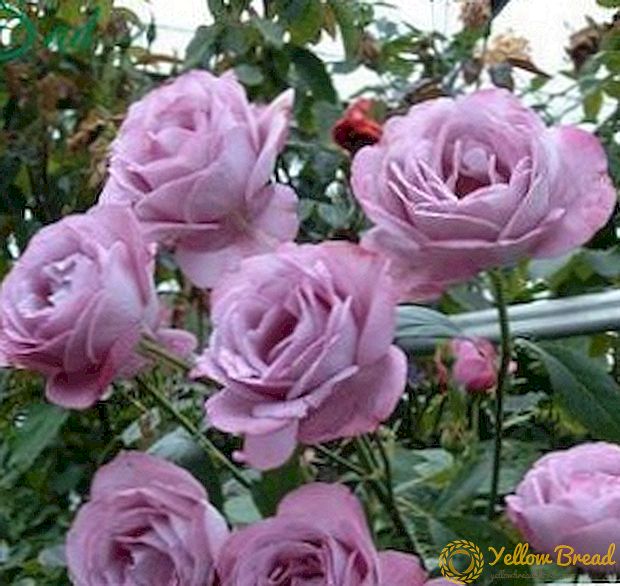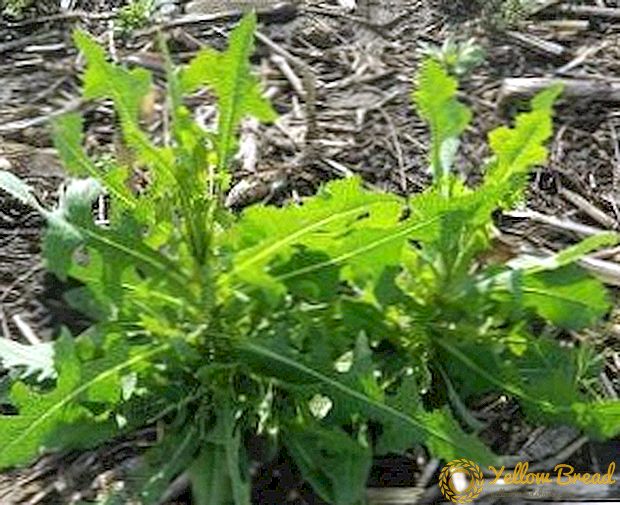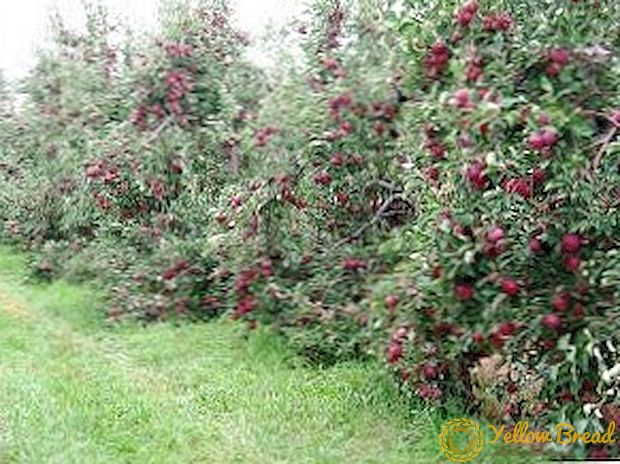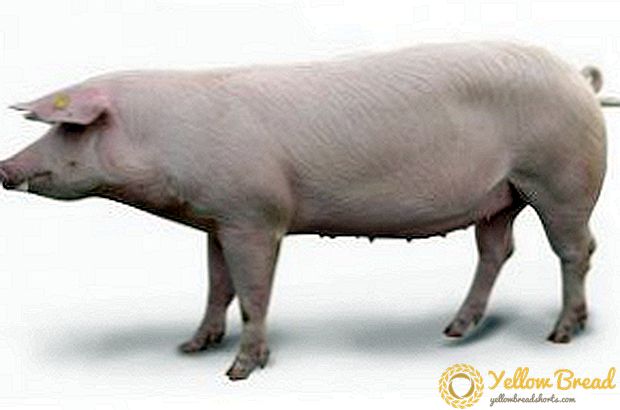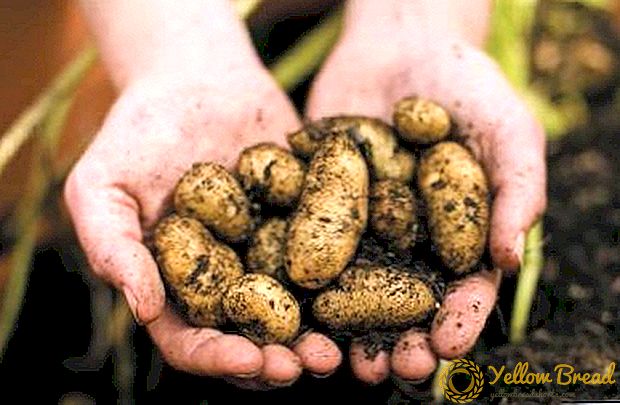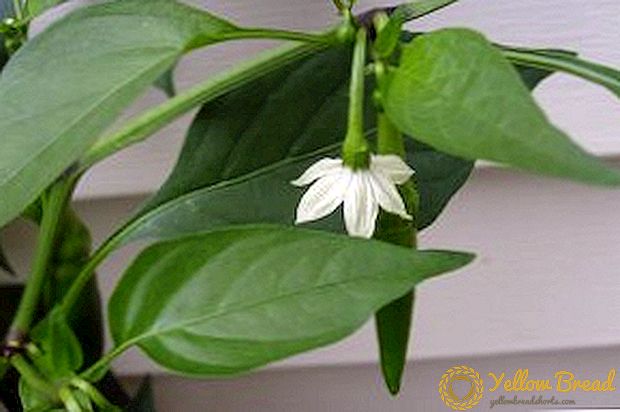 Ehmeya striped is remembered by many florists for its unusual appearance and unpretentious care. This plant is found in the house of almost every lover of indoor flowers.
Ehmeya striped is remembered by many florists for its unusual appearance and unpretentious care. This plant is found in the house of almost every lover of indoor flowers.
Ehmea comes from Brazil, and its natural habitat is tropical forests. Echmeya germinates in the voids that formed in the trees.
The leaves have a rich color and specific shape. At the base they curl, thus forming a funnel, where water is collected during rain.
- Ehmeya striped: optimal conditions for growing
- Lighting
- Temperature
- Ehmeya striped: home care
- Watering and moisture
- Soil and top dressing
- Precautionary measures
- Transplant: when and how
- Ehmeya striped: reproduction kids
- Pest and disease control
Ehmeya striped: optimal conditions for growing
In order for the striped Ehmea to actively develop and grow well, it is important to know how to take care of her and provide comfortable conditions within the premises where you plan to accommodate her. 
Lighting
Bearing in mind that in nature this plant lives in the tropics, the need to provide a large amount of light for echmea is natural.You can put a flower pot on window sill west or east side of the house.
If the southern side was chosen, then it is necessary to shade a flower during the highest activity of the sun, protecting the leaves of the plant from direct burning rays. It is better not to choose the north side at all, since the lack of lighting will make the leaf color blurred and slurred, which will significantly reduce the attractiveness of the homemade ehmea striped, and you can forget about flowering.
Temperature
Ehmeya striped loves warm rooms, but does not tolerate heat. Therefore, it should provide a temperature regime in the range of + 20 ... +27 ° С in the summer and + 17 ... +19 ° С in the winter. In such conditions, the plant will develop steadily and grow, and night and day temperature drops will stimulate flowering in Ehmea.

Ehmeya striped: home care
Ehmeya striped - not a capricious plant, and in the conditions of an apartment or house feels quite well. But in order for you to admire not only beautiful leaves, but also the flowering plants, you should still know some of the requirements and rules for caring for them.
Watering and moisture
Ehmeya striped naturally requires regular watering. But the method of hydration is somewhat different from the care of other plants. So how to water an echmea?
The specifics of watering depends on the time of year. In spring, summer and autumn, the soil must constantly be kept hydrated, otherwise the plant may die. It is necessary to use water soft, separated, filtered or boiled.
Humidity is also important for flowering and the growth of striped striped Ehmea. It is most effective to spray leaves with ordinary water from a spray bottle. This can be done every other day.
Soil and top dressing
Ehmeya loves loose water and breathable soil. To plant a plant in your home, you can buy ready-made soil for bromeliads in the store, or you can prepare the soil mixture yourself. This will require equal parts of deciduous, peaty and humus soil. As an addition, sphagnum moss is sometimes used.
Concerning containers, then choose a relatively low, but wide pot. Do not forget about the drainage to prevent stagnation of water and, accordingly, the decay of the root system.
Speaking about fertilizer Ehmea, it is worth remembering about the special dressing from the store for bromeliadovye plants, or for orchids. These fertilizers are available in liquid form and are ideal for spraying. Simply place the liquid in a spray bottle and distribute the solution over the entire surface of the leaf of the aechmea.
Precautionary measures
If you are going to plant an Achmea at home, flower growers are often interested in whether it is poisonous or not. It should be reported that the juice of the leaves can really become cause skin irritation. In this regard, when working with a plant, always use gloves and wash hands thoroughly after the procedure.  But it is not necessary to be afraid to keep this flower at home, because its hard leaves are unlikely to be eaten by pets, and you can protect your pet from children by placing it in an inaccessible place. As growers sometimes joke, the main thing is not to chop up a plant in a salad, in other cases it is practically not dangerous.
But it is not necessary to be afraid to keep this flower at home, because its hard leaves are unlikely to be eaten by pets, and you can protect your pet from children by placing it in an inaccessible place. As growers sometimes joke, the main thing is not to chop up a plant in a salad, in other cases it is practically not dangerous.
Transplant: when and how
Achmea transplantation will need to be carried out every year if possible. It is recommended to do this in spring.
In the period when ehmeya blooms, replant it in no case can't. The pot under the plant is chosen low, but wide. If in the previous pot ehmea was closely, select a larger container, always with holes for water flow. You will also need a wide pan under the pot.
In the new pot half of the prepared substrate is poured. Then very carefully collect the foliage of the Achmea in a bunch (right at the roots) and remove the plant from the old container, after which it is placed in a new one.  Ehmeya striped does not hold its roots for the soil, so removing it without damaging the plant itself will not be difficult at all. In the new pot, the roots of ehmea are sprinkled with fresh substrate and put on a permanent place of stay.
Ehmeya striped does not hold its roots for the soil, so removing it without damaging the plant itself will not be difficult at all. In the new pot, the roots of ehmea are sprinkled with fresh substrate and put on a permanent place of stay.
Ehmeya striped: reproduction kids
Lovers of striped Ehmea will certainly be interested in the way of its reproduction. You can perform the procedure by separating and transplanting babies, who at that time should grow up to 10-20 cm in height and have their own developed roots.
To propagate ehmeya through transplanting babies,you need to carefully cut them from the main plant, and the cut itself sprinkled with powdered coal wood, slightly dried and planted in a separate pot. A young plant can bloom in about a year and a half. Ehmeya striped is able to multiply and seeds. However, only special enthusiasts take up this process. The plant that turned out to grow by sowing seeds will bloom only after three or even four years.
It is important to know that this plant blooms only once, so if you are wondering why your striped echmea does not bloom, try to get started. transplant her in a new pot and this issue will surely be resolved.
Pest and disease control
Diseases can hit the flower as a result of improper care.
Too low temperatures and excessive watering often cause decay of the leafy rosette, or even the peduncle itself. If, on the contrary, the temperature is very high and the air is extremely dry, the plant will burn and shrivel.To avoid such problems, it is enough just to provide suitable, comfortable conditions for Ehmea, and soon she will begin to delight the grower with her appearance, without any manifestations of diseases.
As for pests, spider mites, a bromeliad scale, a mealybug and aphid become the main enemies of Achmea. As soon as the first signs of damage were noticed, the plant's leaves should be immediately washed with warm water, while preventing this water from entering the soil, and then treated with appropriate chemical agents that can be purchased at a specialized store.  Help fight aphids drugs "Neoron", "Karate", "Decis". From bromeliad shchitovki use Arrivo, Aktellik, Permethrin. For mealybugs, the use of Inta-Vira, Karbofos or Fozalona will be effective.
Help fight aphids drugs "Neoron", "Karate", "Decis". From bromeliad shchitovki use Arrivo, Aktellik, Permethrin. For mealybugs, the use of Inta-Vira, Karbofos or Fozalona will be effective.
Every year drugs against harmful organisms improve, there are new items, so you can additionally consult with a specialist store and, of course, you just need to always carefully read the recommendations on the use of the drug.
As you can see, the cultivation of striped Achma and home care is not at all difficult even for a novice grower.It is enough to take into account some features of the plant and organize the minimum comfort for him to be able to enjoy his magnificent beautiful flowering. n

